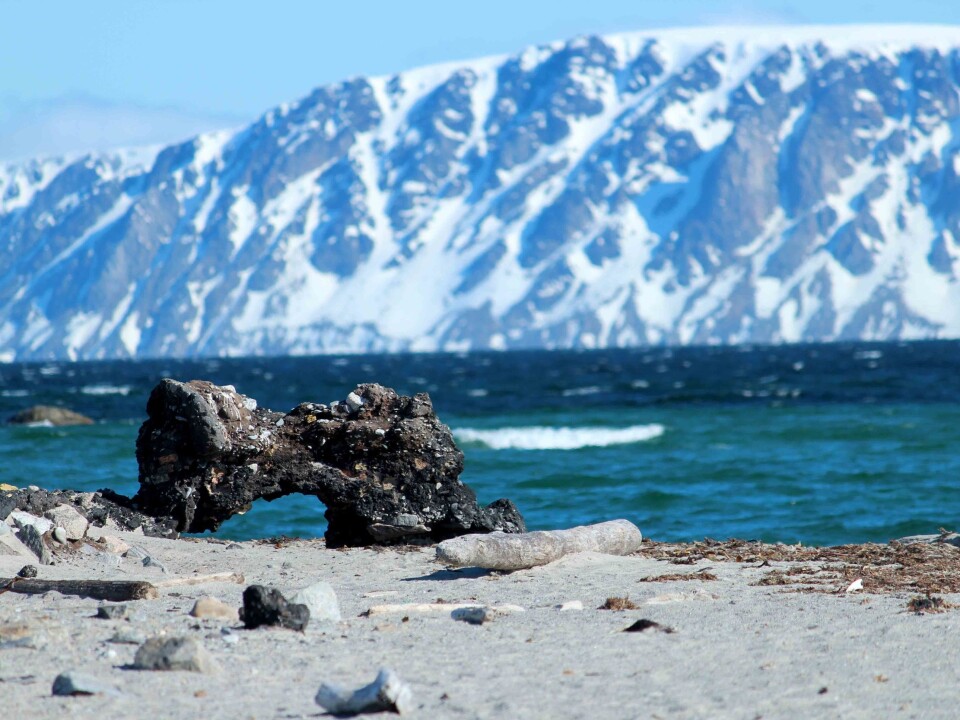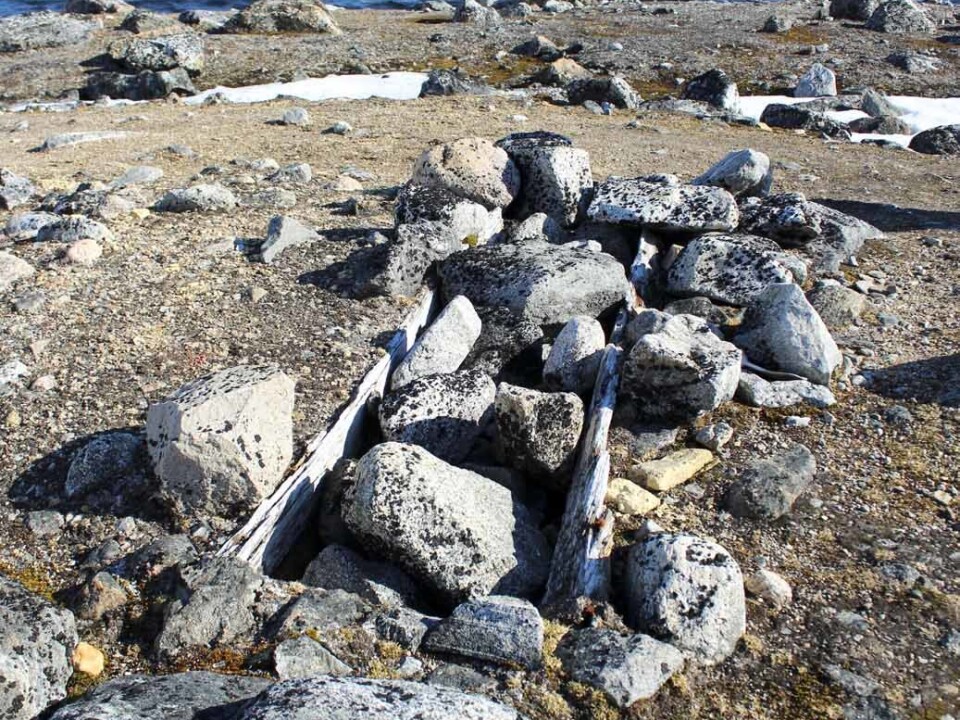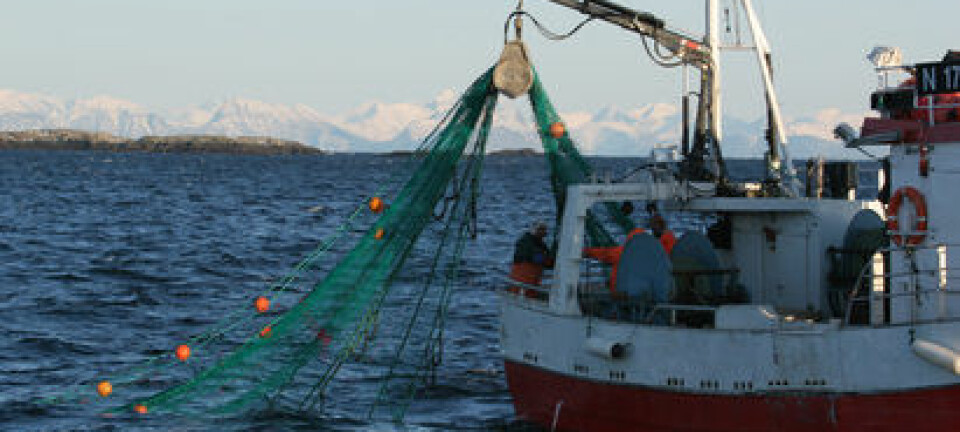An article from University of Tromsø – The Arctic University of Norway

Whalers prepared for death
When European whalers set sail for a new summer season on Svalbard, they brought funeral equipment as part of their luggage. That some of them would die was a certainty, not just a possibility.
Denne artikkelen er over ti år gammel og kan inneholde utdatert informasjon.
Isolated, frozen, wild and lonely. Svalbard has always been a dangerous place to visit, and for the early European whalers, death was a familiar guest. The hundreds of burial grounds in Svalbard bear witness to a workplace where even the slightest mistake could be fatal and a climate where ignorance or bad luck could mean your demise.
Even Willem Barentsz, who discovered Svalbard in 1596, didn’t survive the trip home. He died after his ship became trapped in the ice off Novaya Zemlya, and his crew was forced to spend the winter there. But the expedition’s tragic ending didn’t stop news of its discovery from spreading like wildfire throughout Europe.
The discovery of new lands was always met with excitement, and the English were the first to reach the new territory. They discovered huge pods of whales and other marine mammals and realized there were enormous riches to be had in the icy wilderness.
“The market for animal oils in Europe during this period experienced a huge surge. The oils were used for processing textiles, as a constituent of paint, for lamp oil and for the new modern consumer product, soap,” says Tora Hultgreen, director of the Svalbard Museum.
The oil adventure

Arctic marine mammals with their huge reserves of blubber were perfect for this purpose, and Europe’s major empires immediately began to argue about who had the right to exploit this new treasure trove. An agreement was reached when Europe’s two major naval powers, England and the Netherlands, divided the area between them, and Europe’s first oil industry was born.
“Neither of these countries had any experience with whaling, and were dependent on help from the Basques, who had hunted whales in the Bay of Biscay and along the Labrador coast,” Hultgreen said.
Men from all over Europe soon signed up for whaling ships and learned the techniques of harpooning whales, bringing them to shore, flensing them and extracting the oil from the blubber in large copper kettles. At the end of the summer they travelled back to the mainland with the oil stored in barrels.
Still, there were many who were left behind after the season ended, buried in shallow graves in homemade coffins.

“They knew this was a dangerous journey, and that death could be just around the corner. So they also packed things like wooden boards to build a coffin and perhaps some moss to put at the bottom of the coffin, so that the dead would have a comfortable place to lie,” Hultgreen said.
“If we read between the lines a bit, they were probably motivated by a desire to give their friends an honourable and dignified burial. They did not want to bury people at sea, it was not their custom, and was probably seen as impersonal,” she added.
Caring mates
Hultgreen describes graves that suggest the whalers were particularly careful about how they buried their dead comrades.
“Some have soft layer of sawdust or moss at the bottom, the coffin is lined with a thin fabric and the dead are wearing several layers of clothing, or they are wrapped in a blanket so they will not freeze. It was difficult dig graves in the permafrost, but they tried to bury the bodies as deep as possible, covering the graves with stones to keep them safe from predators,” she says.
All cultural heritage items from before 1946 are automatically protected on Svalbard, and it is rare that researchers are given an exemption to examine whalers’ graves. But exceptions are given if the graves are in the process of being destroyed, as was the case at Likneset in north-western Svalbard in the mid 1980s. Marine archaeologist Dag Nævestad, a researcher at the Norwegian Maritime Museum, led the excavation of graves that were threatened by coastal erosion, and says that these elaborate burials were relatively rare.
“The type of burial certainly relates to the status that the deceased had, but most of the bodies we found were buried in their nicest shirt and long socks that went up to mid-thigh. But we found one slightly atypical grave where the body was buried in a handsome jacket and with a silk scarf around the neck,” he said.
Scurvy a risk
It was not just whaling techniques that were unknown to the whalers. Most had very little knowledge of the harsh Arctic climate, and had only their normal winter clothes for the Svalbard summer.
Nevertheless, the cold itself was not a major cause of death.
“When we analysed material from the graves, we found that a great proportion of the dead had symptoms of scurvy. It is not surprising that this was a frequent cause of death. Most came from the lower social classes without access to healthy food, and would have just lived through a winter in their home country, without fresh fruit and vegetables,” Hultgreen explains.
“They were probably already suffering from a lack of vitamin C, and the unvaried diet of salt meat and dried peas that was served on the whaling ships was fatal for many,” she said.
The irony is that whale meat is a good source of vitamin C this far north, but whale meat was not considered edible.
“They did not know what caused scurvy, so they tried different things to cure it. If they survived, they were not sure which of the cures had worked – whether it was the bear grease smeared on their joints, the mixture of tobacco juice and ash smeared on their gums, the meals they ate that included fresh meat and local plants, or the ten Hail Marys they said before they went to bed at night,” says Nævestad.
Some whalers knew that what we now call scurvy weed (which the Dutch called salad) would help, and this was partly what saved the first seven people who voluntarily spent the winter on Svalbard.
Left behind
In the winter of 1630-31, a group of English whalers was accidentally left behind by their ship at the end of the season. Without food supplies, they were forced to hunt for fresh meat, which saved them from certain death. When the British came back in the spring they were very surprised to discover that the men had survived an entire winter against all odds.
The Dutch were quite inspired by this story, and when they a few years later discovered that the Basques had raided one of their whaling stations on Jan Mayen Island after the season had ended, they decided to leave seven men at Smeerenburg on Svalbard, and seven men on Jan Mayen to guard their gear.
“Among the seven new residents of Smeerenburg were two Germans, four Dutchmen and surprise: a Norwegian! We have concluded there must have been a Karsten Andersen from Fredrikstad among the first Europeans to voluntarily spend the winter on Svalbard,” Nævestad says.
Under the command of Jacob van der Brugge, the group prepared for the winter of 1633 in what turned out to be just the right way.
“They gathered scurvy weed before the snow came and ate it raw. If you cook it, you destroy the vitamins. They set out on long trips by rowboat a few times during the winter to obtain fresh reindeer meat, and when the cook was ill, he was ordered to eat fox meat,” says Nævestad.
The whales disappear
The tactic worked, and all seven came safely home after a hard winter. The seven who stayed on Jan Mayen were less lucky and all perished. The Dutch concluded that the winter climate on Svalbard might be easier to tolerate and abandoned the overwintering project at Jan Mayen for the foreseeable future.
The following winter, the Dutch dispatched seven new daring men to brave the dark winter months on Svalbard, but they failed to gather scurvy weed before the snow came. They also failed to catch any fresh meat, and by February they had all died.
By 1650, the ruthless exploitation of whales had made it almost impossible to find any animals along the coast, and whaling moved to the open sea, right up to the edge of the ice. Anyone who died during these hunts was kept aboard the ship and buried on Svalbard on the way home.
“If you were buried on Svalbard during those days, your wife and children would never be able to visit your grave. It was just a forgotten place, without gravestones, not even buried in consecrated ground. It was a pretty tough life back then,” Hultgreen says.
--------------------------
Read the Norwegian version of this article at forskning.no
































